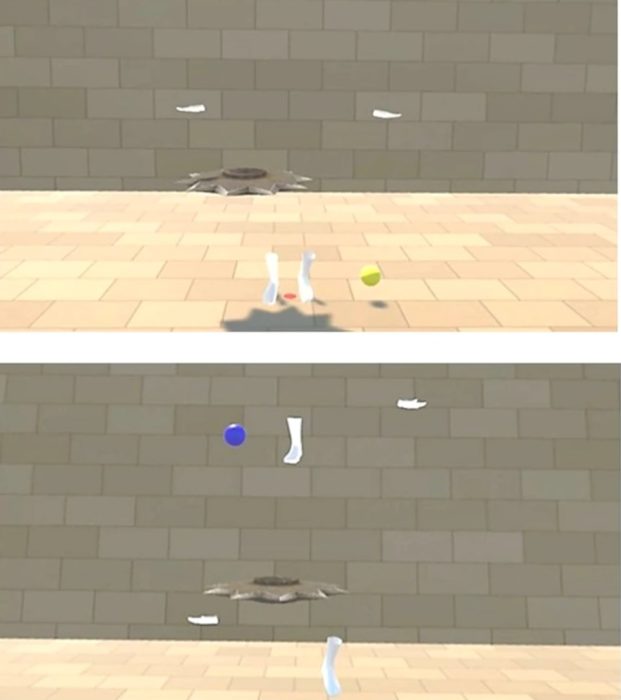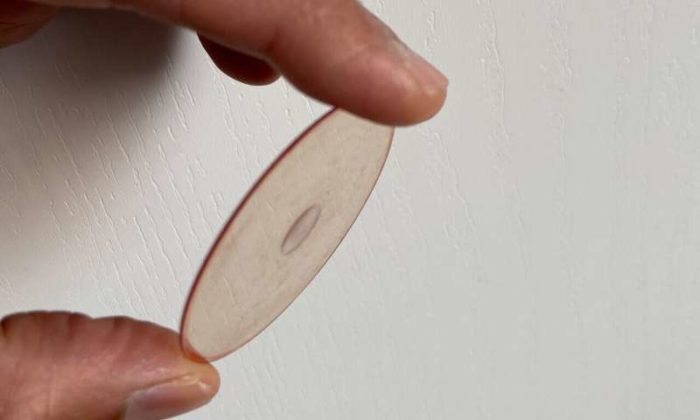Mar
31
2020
 Here is yet another incremental advance in brain-machine interface (BMI) technology – decoding what someone is saying from their brainwaves using a neural network and machine learning. We are still a distance away from using a system like this to allow someone who cannot speak to communicate, but the study nicely illustrates where the technology is. Here is the BBC’s reporting:
Here is yet another incremental advance in brain-machine interface (BMI) technology – decoding what someone is saying from their brainwaves using a neural network and machine learning. We are still a distance away from using a system like this to allow someone who cannot speak to communicate, but the study nicely illustrates where the technology is. Here is the BBC’s reporting:
Scientists have taken a step forward in their ability to decode what a person is saying just by looking at their brainwaves when they speak.
They trained algorithms to transfer the brain patterns into sentences in real-time and with word error rates as low as 3%.
Previously, these so-called “brain-machine interfaces” have had limited success in decoding neural activity.
Now here are all the caveats from the paper. First, the technology used electrocorticography (ECoG), which is an EEG with brain surface electrodes. So this requires an invasive procedure, and persistent electrodes inside the skull and on top of brain tissue. Also, in order to get the best performance, they used a lot of electrodes – resulting in 256 channels (a channel is a comparison in the electrical activity between two electrodes). They simulated what would happen with fewer electrodes by eliminating many of the channels in the data, down to 64, and found that the error rates were about four times greater. The authors argue this is “still within the usable range” but they consider usable range up to a 20-25% error rate. What this shows is that – yes, more electrodes matter. You need the very fine discrimination of brain activity in order to get good (usable) results.
Continue Reading »
Mar
30
2020
 This is an interesting idea that will probably not be actually implemented (although not impossible) but does raise some important points. A paper explores the viability of using urea from human urine as an agent in lunar concrete. Why is something like this even being considered?
This is an interesting idea that will probably not be actually implemented (although not impossible) but does raise some important points. A paper explores the viability of using urea from human urine as an agent in lunar concrete. Why is something like this even being considered?
The overwhelmingly dominant factor of building anything on the Moon is that it costs about $10,000 to put one pound of anything into Earth orbit, and more to take it to the Moon (although most of the energy would be used just getting into orbit). This is why it is a high priority for NASA to reduce the cost of getting stuff into space. Elon Musk has also made this a priority and SpaceX is geared mainly toward this purpose. Even if they reach their goal of reducing the cost by 10 fold, to about $1000 per pound, that still adds up when you are trying to build an entire Moon base. One solution is to use as much native material as possible.
Let’s talk a bit about the lunar regolith. The term regolith just refers to any loose material on top of the rocks on a world’s surface. The Earth has regolith, we call it dirt, sand, or soil. The lunar regolith is the result of micrometeors pulverizing the lunar surface for billions of years. In most locations the regolith extends down 4-5 meters, but can be as deep as 15 meters in places. Because of the absence of natural erosion from wind, water, or biological activity, the lunar regolith remains sharp and pointy. So the Moon is basically covered with a deep blanket of fine but jagged dust.
Continue Reading »
Mar
26
2020
 The short answer to the question – how do you boost your immune system – is that you can’t. The very concept of “boosting” the immune system is not scientific and does not exist within mainstream medicine. That’s because it is based on a fundamental misunderstanding of immunity, and of biological systems. Having said that there are legitimate things you can do to optimize immune function, which all are simply ways of avoiding things that inhibit immune function. But first let’s cover some basic principles.
The short answer to the question – how do you boost your immune system – is that you can’t. The very concept of “boosting” the immune system is not scientific and does not exist within mainstream medicine. That’s because it is based on a fundamental misunderstanding of immunity, and of biological systems. Having said that there are legitimate things you can do to optimize immune function, which all are simply ways of avoiding things that inhibit immune function. But first let’s cover some basic principles.
Basic Principles
Biological organisms are complex, dynamic, homeostatic systems. This may seem obvious when you think about it, but many dubious health claims violate this basic understanding of biology. The immune system itself is a highly complex system – so complex that even though we have a vast amount of knowledge about the immune system, we have a hard time predicting the net effect of specific changes to the system. We have studied drugs in auto immune diseases, for example, that have had the opposite of the predicted net effect. This means we need to be very wary of any study that purports to show a change in some measure of immune function, and then concludes that this is a good thing, a “boosting” of immunity.
But perhaps even more important is the homeostatic bit. Immunity is a delicate balance, and evolution has tinkered with this system for hundreds of millions of year. If there were a simple way to make this system function better, we would have evolved it already. Put another way, there is no simple way to hack this system with a supplement or other measure. Immunity is also a double-edged sword – it fights off invaders and damaged cells, while trying to minimize harm to our own tissue. Think of inflammation – this is a good thing when it is killing bacteria, but also causes a lot of harm. When this delicate balance is disturbed, the result can be an auto-immune disease.
Therefore, we should think twice or thrice before doing something meant to disturb this delicate balance. Chances are greater we will make things worse than better. We need carefully conducted clinical trials to determine the net effect of doing anything to immunity in specific clinical contexts. Also, there is nothing better than a healthy immune system – there is no “super” immunity you can get from your diet or taking a supplement.
Continue Reading »
Mar
24
2020
A new study offers a small advance in our understanding of the body ownership illusion, but it is a good opportunity to review this cool and important neurological phenomenon. It also has practical implications. The body ownership illusion is the subjective sense that you occupy or own your body and its parts. There is also a separate phenomenon that gives you the subjective sense that you control your body parts.
offers a small advance in our understanding of the body ownership illusion, but it is a good opportunity to review this cool and important neurological phenomenon. It also has practical implications. The body ownership illusion is the subjective sense that you occupy or own your body and its parts. There is also a separate phenomenon that gives you the subjective sense that you control your body parts.
What I find extremely interesting about these phenomena is that we initially didn’t know they needed to exist. People don’t generally wonder what creates the sense that they own and control their own bodies. It’s not even a question people think to ask (unless they are somehow involved in neuroscience). At first it may seem obvious – we are our bodies, and we do control our bodies, so why shouldn’t we have that sense? But like everything you experience and feel, this is not a passive or automatic sensation. It is an active construction of your brain. There are dedicated circuits in the brain whose specific function is to create these sensations.
As with most neurological phenomena we first suspected their existence by encountering patients who have suffered brain damage (like from a stroke) and therefore have a lack of some subset of these functions. For example, there is alien-hand syndrome. This is the sense that a body part is acting “on it’s own” without your conscious control. There are also cases that demonstrate the separation of body parts from the sense that we own those body parts. Phantom limbs, for example, occur when a limb is removed but the brain circuitry that creates the sense of ownership of the limb is still there. There can even be supernumerary phantom limbs – an illusion of an extra limb that was never there. This can happen when a stroke paralyzes a limb but spares the circuitry that creates the sense of ownership. There are also cases of the apparent opposite – when a limb is present and functioning, but the person has the uncomfortable sense that it does not belong to them. We also have evidence from certain drug-induced and other states of feeling entirely separated from our bodies.
We have a partial understanding of how our brains create these sensations. They all involve circuits that compare two or more inputs. When they are synchronous we have the subjective sense of ownership or control. For the sense of control the circuits compare our intention to move and our actual movements. When they match, we feel we have control. For ownership the primary circuit involves “visual-motor synchronization” or visual-sensory synchronization. If what we see of ourselves matches what we feel, that synchronization produces the sense of ownership. Obviously, we don’t immediately have an out-of-body experience when we close our eyes. There are other sensory inputs that act redundantly – proprioception, vestibular function, tactile sensation, and muscle feedback. It’s a robust system, which is why the illusion rarely breaks in day-to-day life. You have to disrupt the main parts of the brain producing this sensation with drugs, oxygen deprivation, or something else.
Continue Reading »
Mar
23
2020
 One extremely exciting technology that is in development is the brain-machine interface (BMI). This technology allows for communication between a biological brain and a computer chip. Once perfected, the implications are incredible. Perhaps most exciting is the possibility of robotic prosthetics that can be controlled with the mind. There are many medical conditions that impair the ability to move, from spinal cord injury to strokes that can literally cause people to be “locked in”. In many conditions the brain is working, but the peripheral nervous system is damaged. With a sufficiently functioning BMI non-functioning limbs or blockages in communication can be bypassed. Amputees could also have fully robotic limbs to replace what’s missing.
One extremely exciting technology that is in development is the brain-machine interface (BMI). This technology allows for communication between a biological brain and a computer chip. Once perfected, the implications are incredible. Perhaps most exciting is the possibility of robotic prosthetics that can be controlled with the mind. There are many medical conditions that impair the ability to move, from spinal cord injury to strokes that can literally cause people to be “locked in”. In many conditions the brain is working, but the peripheral nervous system is damaged. With a sufficiently functioning BMI non-functioning limbs or blockages in communication can be bypassed. Amputees could also have fully robotic limbs to replace what’s missing.
From a theoretical perspective, all of the necessary proofs of concept have been done. The brain can learn to control machines, even computers. The brain can map itself to new limbs, and it can incorporate new sensory feedback. With sufficient sensory feedback, control is enhanced, and the sensation that the new artificial limb is part of one’s body can be complete. We can even be made to feel as if we occupy virtual avatars.
Computer hardware and software technology are already powerful enough meet the demands of any such BMI application. Robotics are also functional enough to work, although there is certainly a lot of room for improvement here. All these components are good enough to use right now, and continued incremental advances will just make them better.
The main limiting factor for BMI applications right now is the interface itself – how do we connect the brain to silicon? Scalp surface electrodes are the safest and most convenient. Electrical signals from the brain do make their way through the skull and scalp and can be recorded, but they are greatly attenuated. Only relatively large parts of the brain firing at the same time produce a sufficient signal to produce a detectable wave at the surface. Still, even with this method there are BMI applications, but the discrimination is limited.
Continue Reading »
Mar
20
2020
 We have many current solutions to the energy challenges we face – solar, wind, geothermal, hydroelectric, nuclear. I and others have previously argued that if we are going to have the best chance to minimize climate change as much as possible, we need every option on the table. That is partly because no one of them is perfect, and they get worse the more you try to push penetration into the energy infrastructure. So best to pick the low-hanging fruit from each. Also, if we try to solve our energy problems with one solution we would likely run into shortages of raw material and optimal locations.
We have many current solutions to the energy challenges we face – solar, wind, geothermal, hydroelectric, nuclear. I and others have previously argued that if we are going to have the best chance to minimize climate change as much as possible, we need every option on the table. That is partly because no one of them is perfect, and they get worse the more you try to push penetration into the energy infrastructure. So best to pick the low-hanging fruit from each. Also, if we try to solve our energy problems with one solution we would likely run into shortages of raw material and optimal locations.
In fact, it would be nice to add more options. Researchers are aggressively trying to work out the challenge of fusion energy, for example. Even if that succeeds it won’t be the one optimal solution for all our energy needs, but it will help a lot. We also need better grid storage options. You may also notice that I did not have biofuels on the list, because I think it’s unlikely they will make a major contribution, at least not if they need to use up arable land that could be used for food production. But if we can develop a biofuel process that does not require premium arable land, that could fill a niche also.
There is another possible technology on the horizon that occasionally grabs headlines when some incremental advance is made – the artificial leaf. This term is used to refer to any process that uses light in a photosynthesis type process. So it is not a photovoltaic, directly creating electricity, but rather is using light to split water and combining the hydrogen with CO2 from the atmosphere to make fuel. Essentially, this is artificial biofuel. Then why not just use biological leaves to make biofuel? That gets back to the land issue – you could theoretically have a biofuel plant using an artificial leaf process in the desert. I suppose theoretically you could also use salt water for the process, and would therefore not be a drain on our fresh water supply (but I am not sure about this).
Continue Reading »
Mar
17
2020
 In the past I have written a defense of elitism and expertise, and articles exploring the phenomenon of anti-intellectualism. For those who reject science this is a core issue – they must attack expertise, reject consensus, and defend populism as their justification for promoting the idea that the consensus of scientific opinion is wrong. They do so with the same tired and rejected arguments they have for decades, which I guess is in line with their anti-intellectualism.
In the past I have written a defense of elitism and expertise, and articles exploring the phenomenon of anti-intellectualism. For those who reject science this is a core issue – they must attack expertise, reject consensus, and defend populism as their justification for promoting the idea that the consensus of scientific opinion is wrong. They do so with the same tired and rejected arguments they have for decades, which I guess is in line with their anti-intellectualism.
Recently Michael Egnor, who writes for the anti-science Discovery Institute, and with whom I have tangled before, wrote a stunning defense of anti-intellectualism. He marshaled all the old tropes, which I have already dealt with, but I felt it was especially poignant in the middle of a pandemic. We are actually seeing in real time the consequences of science-denial, of rejecting the advice of experts and basing opinions on your “hunches”, and of approaching reality with a general attitude of anti-expertise populism.
The core of Egnor’s anti-intellectual attack is the notion that – those scientists have been wrong before. First – of course they have. Science is not a crystal ball. It is a set of methods for slowly, painstakingly working out how reality functions. It is full of false hypotheses, dead-ends, mistakes, and occasional brilliance. But mostly it’s careful tedious work, which is then put through the meat-grinder of peer-review. Science is messy, which is why I spend perhaps the majority of my time writing here and on SBM discussing the messiness of science, the pitfalls, the institutional failures, and the changes that many think will help make the institutions of science incrementally better.
Continue Reading »
Mar
16
2020
 I’m a sucker for perpetual motion machines. I don’t mean that I think they work – they don’t – but they are often intriguing contraptions out of some cyberpunk fantasy. They are also often a bit of a puzzle. How are they supposed to work, and why don’t they? That free energy or perpetual motion machines don’t work is a given, because of the laws of thermodynamics. Energy has to come from somewhere, so for each such claim it’s a fun game to figure out where the energy is actually coming from. This game also helps dispel any notion of continuous or free energy.
I’m a sucker for perpetual motion machines. I don’t mean that I think they work – they don’t – but they are often intriguing contraptions out of some cyberpunk fantasy. They are also often a bit of a puzzle. How are they supposed to work, and why don’t they? That free energy or perpetual motion machines don’t work is a given, because of the laws of thermodynamics. Energy has to come from somewhere, so for each such claim it’s a fun game to figure out where the energy is actually coming from. This game also helps dispel any notion of continuous or free energy.
A new perpetual motion claim is revealed in an article in the Rob Report. The claims is for an electric plane that will fly mostly with the energy generated by the friction of the flying itself. The idea is that the plane will have rechargeable electric batteries that are used for take-off and landing. But while in flight, the batteries will be recharged by vibrations and the flexing of the wings. The inventor, Michal Bonikowski, who calls his project Eather One, hopes this will yield enough energy to keep the plane flying indefinitely.
The problem with this concept, as with all perpetual motion concepts, is the second law of thermodynamics. Every time you change energy from one state to another, at least a little bit is lost. You can never have 100% efficiency. So the energy you use to propel the plane forward will have to be greater than the energy you harvest from pushing through the air. If you design a mechanism (as in the concept art) for harvesting air friction, the extra resistance from the mechanism will cause the plane to slow by more than using that energy to propel it will increase its speed. The entire process will be a net negative. You would be better off optimizing aerodynamics.
Continue Reading »
Mar
13
2020
 This is definitely one of those “Holy Sh*!” technology breakthroughs; a game-changer that will likely have many more implications than you can take in immediately. Researchers have demonstrated that with the “judicious design of a multi-level diffractive lens (MDL)” they can create a single flat (one thousandth of an inch thick) thin lens with an extreme depth of focus – four orders of magnitude greater than traditional lenses. Let that sink in.
This is definitely one of those “Holy Sh*!” technology breakthroughs; a game-changer that will likely have many more implications than you can take in immediately. Researchers have demonstrated that with the “judicious design of a multi-level diffractive lens (MDL)” they can create a single flat (one thousandth of an inch thick) thin lens with an extreme depth of focus – four orders of magnitude greater than traditional lenses. Let that sink in.
The depth of focus (or depth of field for objects not at infinity) is the range over which objects are in focus. You can adjust the depth of field on a camera by changing the aperture, with smaller aperture settings having a deeper depth of field. But you still need to focus the camera to bring the desired image into sharp focus. This requires that the camera can change the distance between the lens and the sensor, and modern cameras may use multiple lenses. Good cameras also use multiple lenses for different colors (wavelengths of visible light) to make sure all the colors are focusing the same way.
Now imagine if all this could be replaced with a single very thin flat lens. That is what the researchers have done. They accomplish this by using nanostructures on the glass to control the path of the light. The lens can simultaneously focus objects at different distances, and also light of different colors. What we have now is a proof of concept, and of course we need to see what an an actual commercial camera using this technology will be like. But if the published results pan out, there are several immediately obvious implications.
The first is much smaller, cheaper, lighter camera lenses. This will be great for cell phones and other tiny electronic devices with cameras. Medical devices such as those used for endoscopic surgery would also benefit from smaller lenses. Any situation where size and weight are at a premium would benefit – such as drone cameras.
Continue Reading »
Mar
12
2020
 We like extremes, partly because they help define the borders of reality. It helps our mental model of the world when the know the biggest, smallest, hottest, lightest, or fastest of something. It’s also just fascinating to see how extreme some things can get. For this reason there has been a fascination with which dinosaur is the biggest – how big did these animals get. The record is currently held by Argentinasaurus, a long-necked sauropod, weighing between 77 and 110 tons. Meanwhile, the record for the smallest known dinosaur is microraptor, a bird-like dinosaur only 40 cm long. Well, that is until the latest discovery.
We like extremes, partly because they help define the borders of reality. It helps our mental model of the world when the know the biggest, smallest, hottest, lightest, or fastest of something. It’s also just fascinating to see how extreme some things can get. For this reason there has been a fascination with which dinosaur is the biggest – how big did these animals get. The record is currently held by Argentinasaurus, a long-necked sauropod, weighing between 77 and 110 tons. Meanwhile, the record for the smallest known dinosaur is microraptor, a bird-like dinosaur only 40 cm long. Well, that is until the latest discovery.
Scientists report the discovery of the head of a bird-like dinosaur trapped in amber. The species has been named Oculudentavis khaungraae and is about the size of a bee hummingbird, the smallest living bird. The specimen is trapped in amber from Myanmar, and is dated at 99 million years old. The amber preserved some soft tissue, including its tongue. The specimen is interesting on multiple levels.
First, it reflects the extreme of vertibrate miniaturization. It’s difficult to cram all the sensory organs into a tiny skull, and species that evolve to become so small have to find solutions. In this case the eye socket anatomy appears different than hummingbirds and other tiny birds. Rather than a rim of bone, the socket is more spoon-shaped. The anatomy also suggests a small opening for light, which further implies the species was diurnal.
The mouth sports a surprising number of teeth, making the creature look like a predator. At that size is likely fed on insects. So we have a bird-like dinosaur the size of a tiny hummingbird that hunted insects during the day. The anatomy, such as fusion of the skull, also suggests this was an adult, so not just a juvenile specimen to explain its small size.
Continue Reading »
 Here is yet another incremental advance in brain-machine interface (BMI) technology – decoding what someone is saying from their brainwaves using a neural network and machine learning. We are still a distance away from using a system like this to allow someone who cannot speak to communicate, but the study nicely illustrates where the technology is. Here is the BBC’s reporting:
Here is yet another incremental advance in brain-machine interface (BMI) technology – decoding what someone is saying from their brainwaves using a neural network and machine learning. We are still a distance away from using a system like this to allow someone who cannot speak to communicate, but the study nicely illustrates where the technology is. Here is the BBC’s reporting:
 This is an interesting idea that will probably not be actually implemented (although not impossible) but does raise some important points.
This is an interesting idea that will probably not be actually implemented (although not impossible) but does raise some important points.  The short answer to the question – how do you boost your immune system – is that you can’t. The very concept of “boosting” the immune system is not scientific and does not exist within mainstream medicine. That’s because it is based on a fundamental misunderstanding of immunity, and of biological systems. Having said that there are legitimate things you can do to optimize immune function, which all are simply ways of avoiding things that inhibit immune function. But first let’s cover some basic principles.
The short answer to the question – how do you boost your immune system – is that you can’t. The very concept of “boosting” the immune system is not scientific and does not exist within mainstream medicine. That’s because it is based on a fundamental misunderstanding of immunity, and of biological systems. Having said that there are legitimate things you can do to optimize immune function, which all are simply ways of avoiding things that inhibit immune function. But first let’s cover some basic principles.
 One extremely exciting technology that is in development is the brain-machine interface (BMI). This technology allows for communication between a biological brain and a computer chip. Once perfected, the implications are incredible. Perhaps most exciting is the possibility of robotic prosthetics that can be controlled with the mind. There are many medical conditions that impair the ability to move, from spinal cord injury to strokes that can literally cause people to be “locked in”. In many conditions the brain is working, but the peripheral nervous system is damaged. With a sufficiently functioning BMI non-functioning limbs or blockages in communication can be bypassed. Amputees could also have fully robotic limbs to replace what’s missing.
One extremely exciting technology that is in development is the brain-machine interface (BMI). This technology allows for communication between a biological brain and a computer chip. Once perfected, the implications are incredible. Perhaps most exciting is the possibility of robotic prosthetics that can be controlled with the mind. There are many medical conditions that impair the ability to move, from spinal cord injury to strokes that can literally cause people to be “locked in”. In many conditions the brain is working, but the peripheral nervous system is damaged. With a sufficiently functioning BMI non-functioning limbs or blockages in communication can be bypassed. Amputees could also have fully robotic limbs to replace what’s missing. We have many current solutions to the energy challenges we face – solar, wind, geothermal, hydroelectric, nuclear. I and others have previously argued that if we are going to have the best chance to minimize climate change as much as possible,
We have many current solutions to the energy challenges we face – solar, wind, geothermal, hydroelectric, nuclear. I and others have previously argued that if we are going to have the best chance to minimize climate change as much as possible,  In the past I have written
In the past I have written  I’m a sucker for perpetual motion machines. I don’t mean that I think they work – they don’t – but they are often intriguing contraptions out of some cyberpunk fantasy. They are also often a bit of a puzzle. How are they supposed to work, and why don’t they? That free energy or perpetual motion machines don’t work is a given, because of the laws of thermodynamics. Energy has to come from somewhere, so for each such claim it’s a fun game to figure out where the energy is actually coming from. This game also helps dispel any notion of continuous or free energy.
I’m a sucker for perpetual motion machines. I don’t mean that I think they work – they don’t – but they are often intriguing contraptions out of some cyberpunk fantasy. They are also often a bit of a puzzle. How are they supposed to work, and why don’t they? That free energy or perpetual motion machines don’t work is a given, because of the laws of thermodynamics. Energy has to come from somewhere, so for each such claim it’s a fun game to figure out where the energy is actually coming from. This game also helps dispel any notion of continuous or free energy. This is definitely one of those “Holy Sh*!” technology breakthroughs; a game-changer that will likely have many more implications than you can take in immediately.
This is definitely one of those “Holy Sh*!” technology breakthroughs; a game-changer that will likely have many more implications than you can take in immediately.  We like extremes, partly because they help define the borders of reality. It helps our mental model of the world when the know the biggest, smallest, hottest, lightest, or fastest of something. It’s also just fascinating to see how extreme some things can get. For this reason there has been a fascination with which dinosaur is the biggest – how big did these animals get.
We like extremes, partly because they help define the borders of reality. It helps our mental model of the world when the know the biggest, smallest, hottest, lightest, or fastest of something. It’s also just fascinating to see how extreme some things can get. For this reason there has been a fascination with which dinosaur is the biggest – how big did these animals get. 




